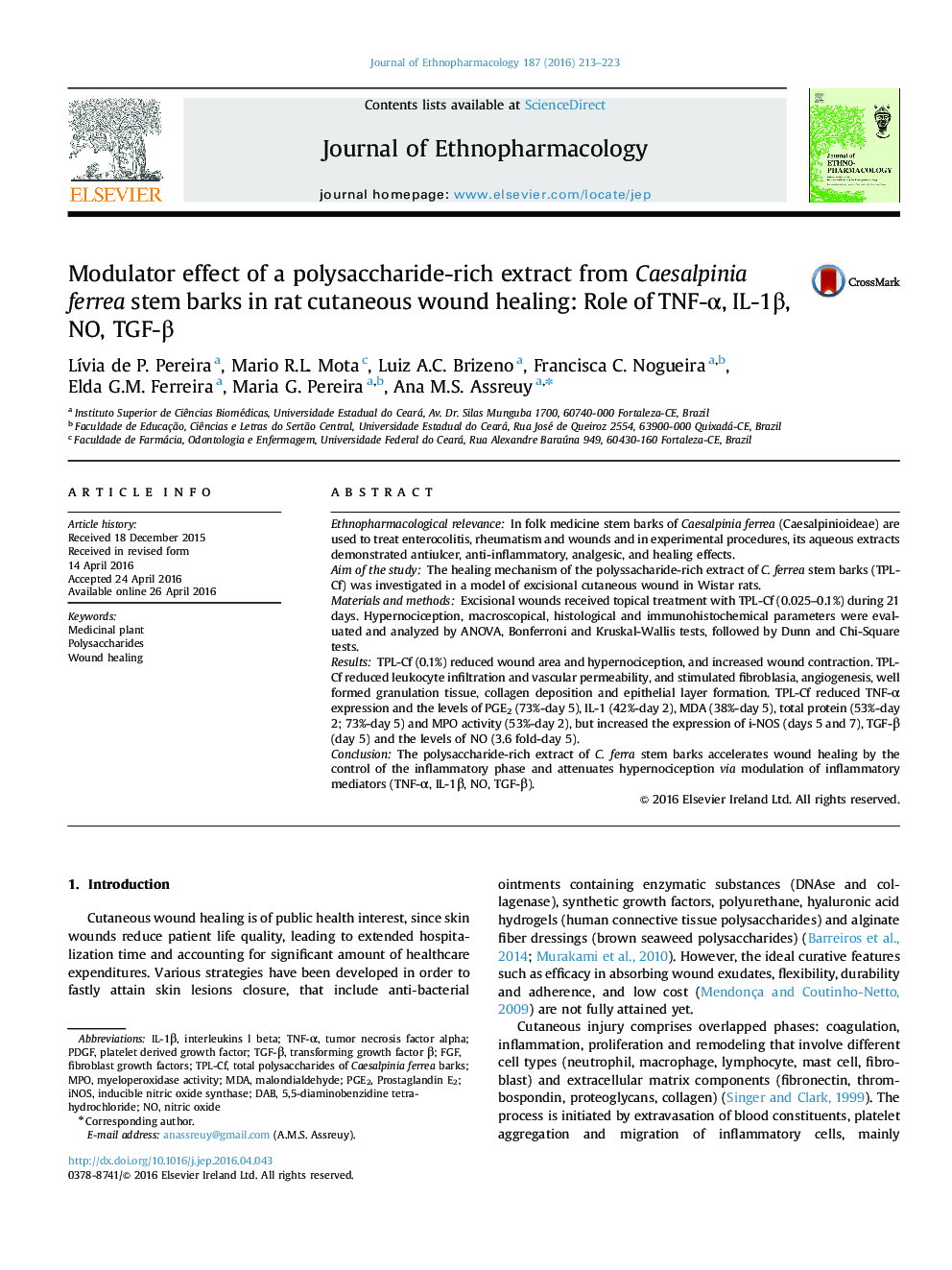| Article ID | Journal | Published Year | Pages | File Type |
|---|---|---|---|---|
| 2544674 | Journal of Ethnopharmacology | 2016 | 11 Pages |
Ethnopharmacological relevanceIn folk medicine stem barks of Caesalpinia ferrea (Caesalpinioideae) are used to treat enterocolitis, rheumatism and wounds and in experimental procedures, its aqueous extracts demonstrated antiulcer, anti-inflammatory, analgesic, and healing effects.Aim of the studyThe healing mechanism of the polyssacharide-rich extract of C. ferrea stem barks (TPL-Cf) was investigated in a model of excisional cutaneous wound in Wistar rats.Materials and methodsExcisional wounds received topical treatment with TPL-Cf (0.025–0.1%) during 21 days. Hypernociception, macroscopical, histological and immunohistochemical parameters were evaluated and analyzed by ANOVA, Bonferroni and Kruskal-Wallis tests, followed by Dunn and Chi-Square tests.ResultsTPL-Cf (0.1%) reduced wound area and hypernociception, and increased wound contraction. TPL-Cf reduced leukocyte infiltration and vascular permeability, and stimulated fibroblasia, angiogenesis, well formed granulation tissue, collagen deposition and epithelial layer formation. TPL-Cf reduced TNF-α expression and the levels of PGE2 (73%-day 5), IL-1 (42%-day 2), MDA (38%-day 5), total protein (53%-day 2; 73%-day 5) and MPO activity (53%-day 2), but increased the expression of i-NOS (days 5 and 7), TGF-β (day 5) and the levels of NO (3.6 fold-day 5).ConclusionThe polysaccharide-rich extract of C. ferra stem barks accelerates wound healing by the control of the inflammatory phase and attenuates hypernociception via modulation of inflammatory mediators (TNF-α, IL-1β, NO, TGF-β).
Graphical abstractFigure optionsDownload full-size imageDownload high-quality image (426 K)Download as PowerPoint slide
